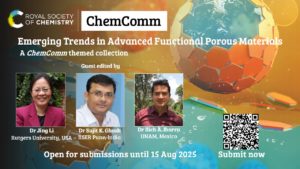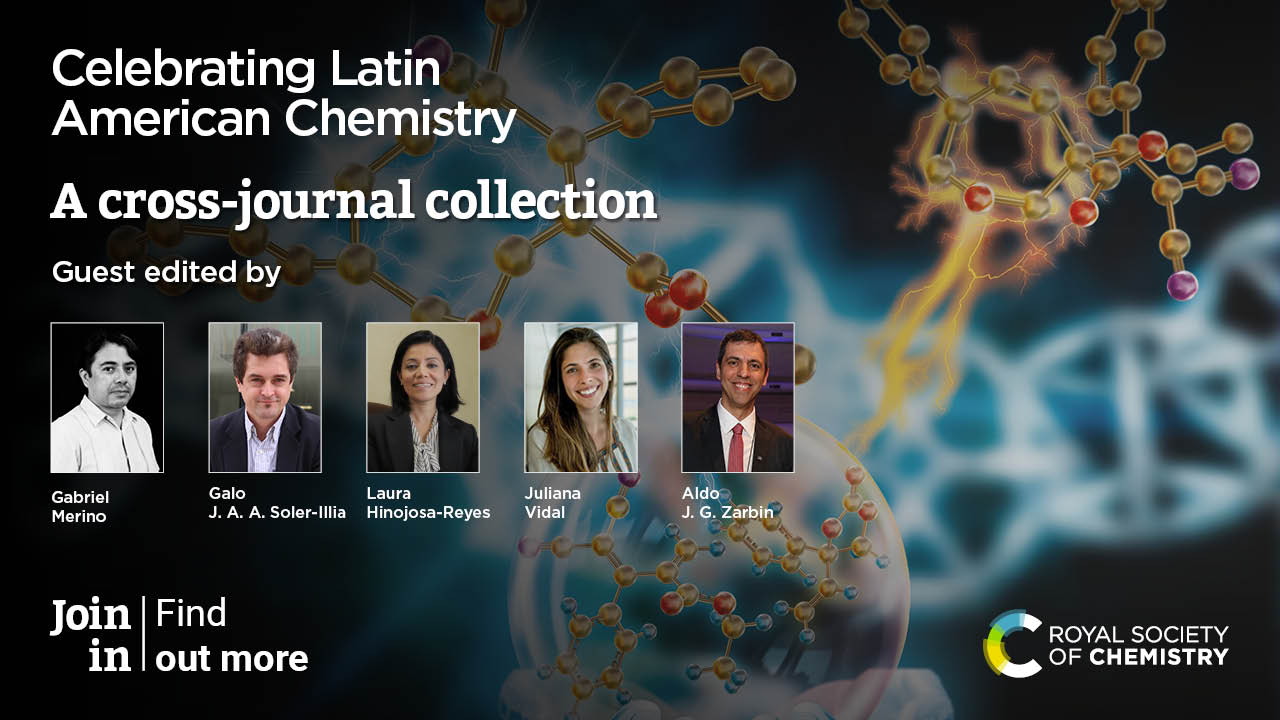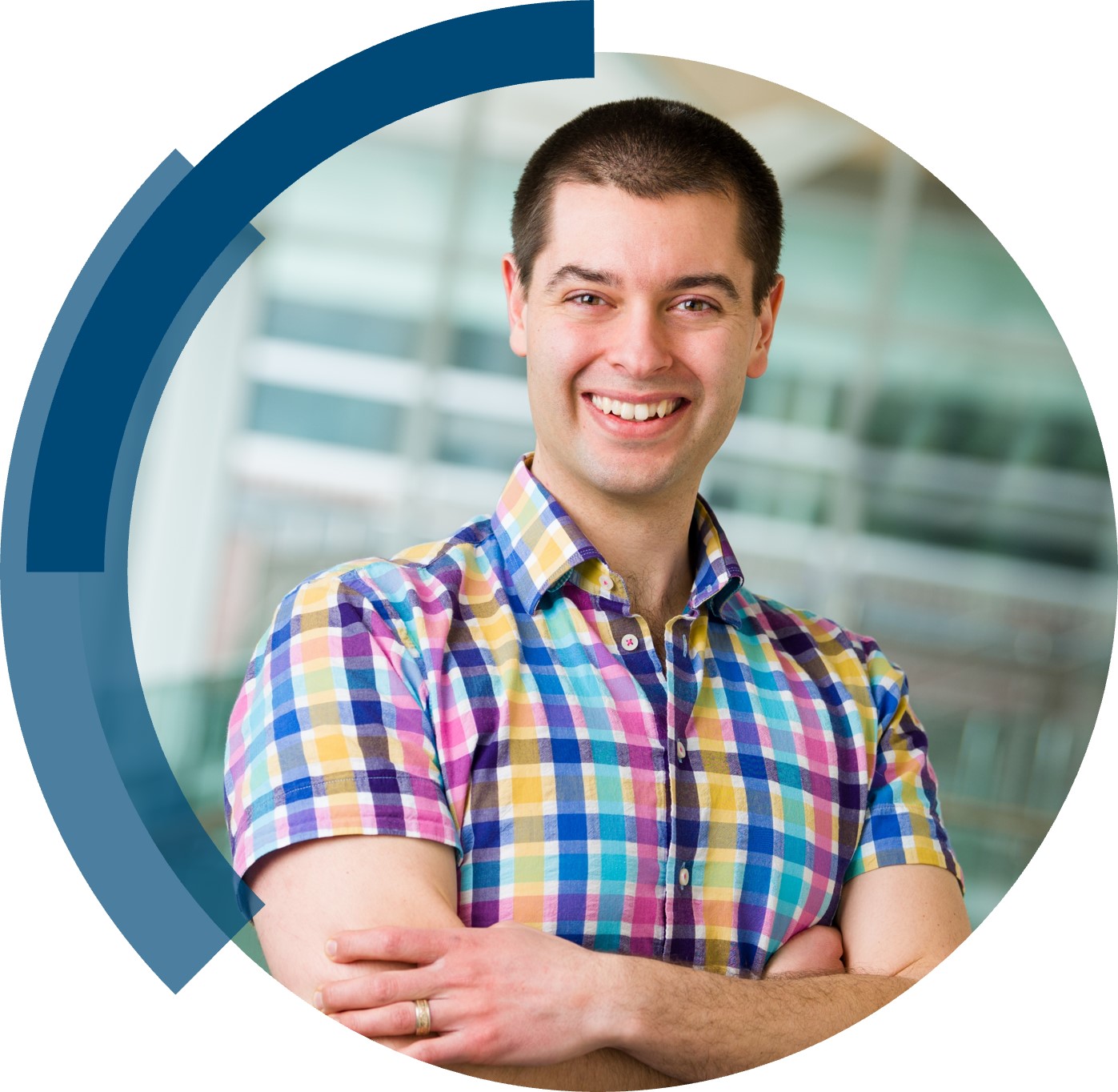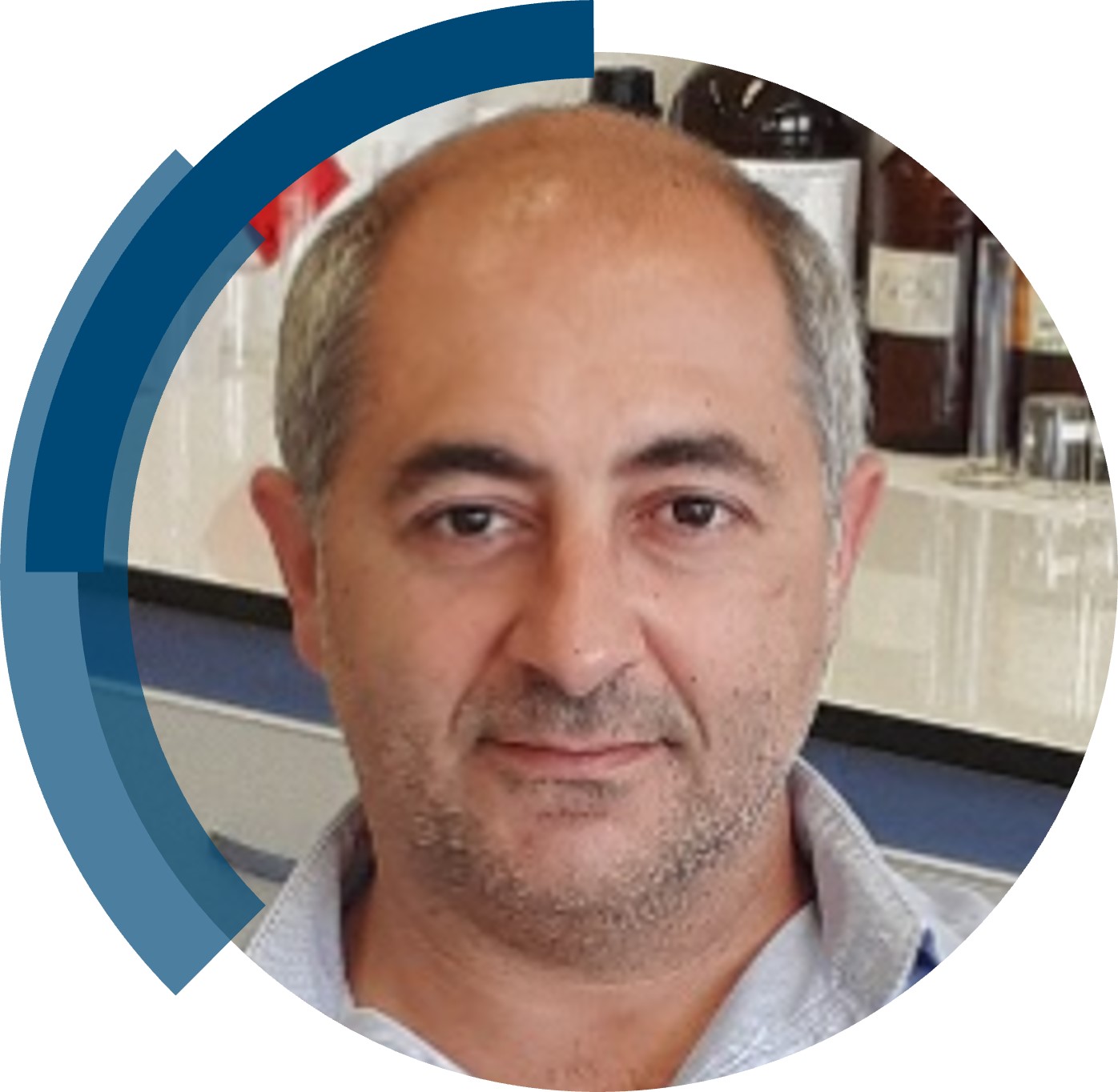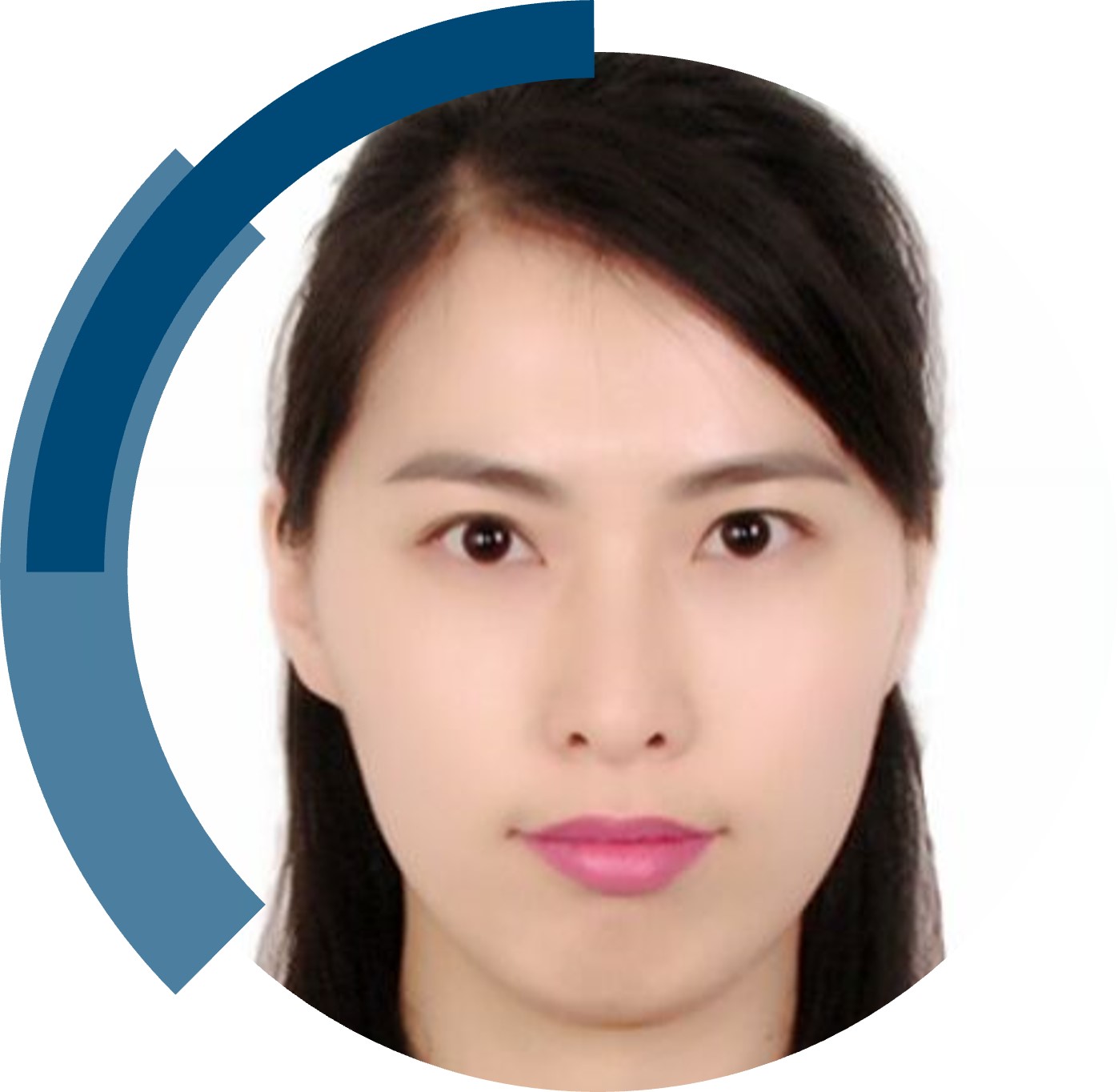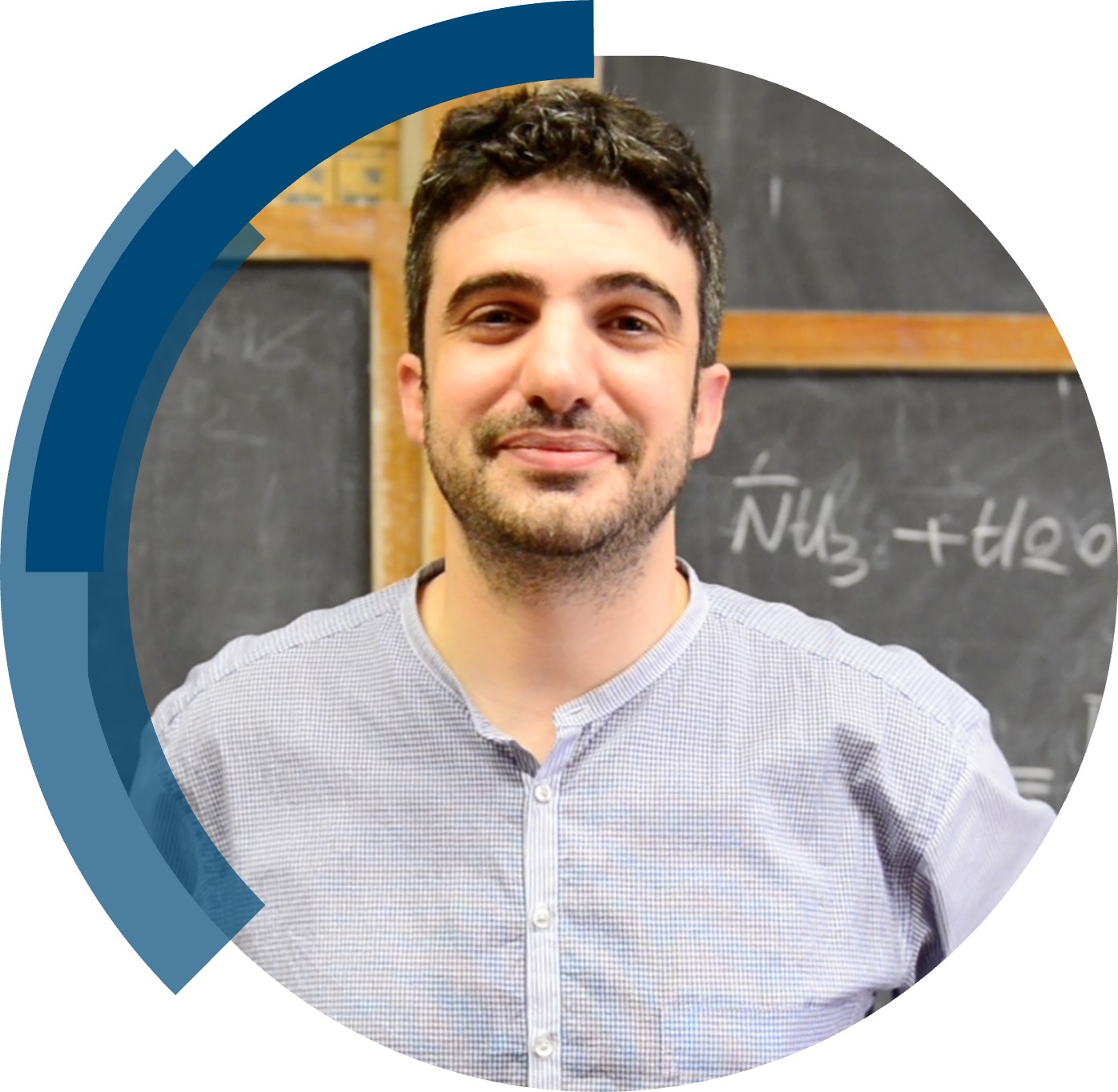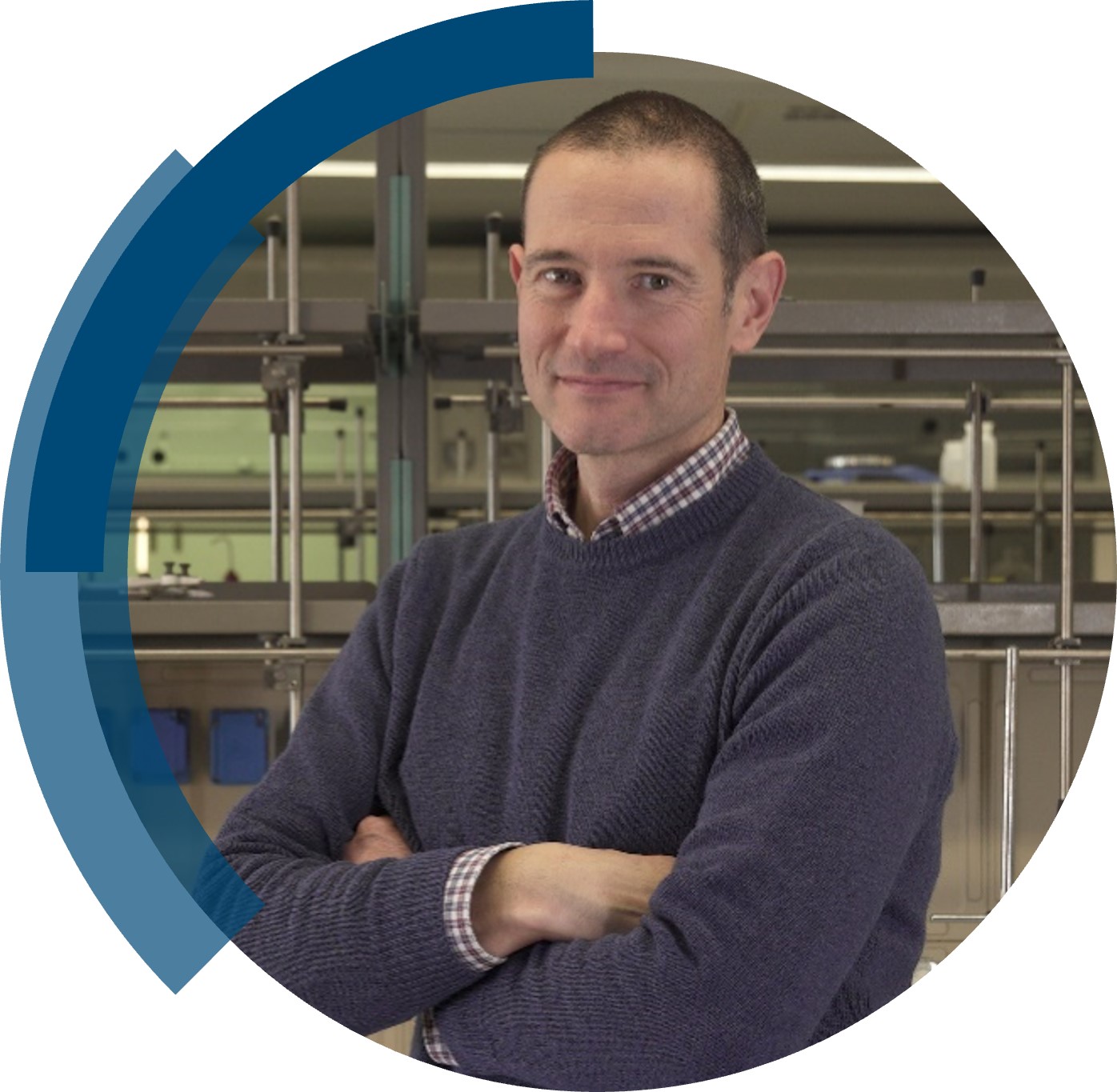
ChemComm is publishing its 60th volume in 2024. Over the past 60 years, ChemComm has been the RSC’s most cited journal, and one of the most trusted venues for rapid publication of short communications. In our anniversary year, we recognise the important contributions ChemComm has made, and continues to make, in advancing the chemical sciences.
As part of our anniversary celebrations, we’ve brought together a collection featuring the latest research from some of our most loyal and dedicated authors. From those marking the beginning of their independent academic career by publishing their first article with us, to the rising stars and established leaders publishing in our yearly ‘Emerging Investigators’ and ‘Pioneering Investigators’ collections, this collection champions the contributions of our worldwide author community. We are proud many authors choose to support our journal by regularly publishing their best work with us. This collection also features papers from our ChemComm Emerging Investigator Lectureship winners, and our Outstanding Reviewer awardees, whose invaluable feedback has shaped our published content through the years.
To accompany the collection, we’ll be publishing interviews with contributing authors where they provide further insight into their research and reflect on their journey with ChemComm.
Check out our interview with Shiqiang Wang (Institute of Materials Research and Engineering (IMRE) of A*STAR, Singapore) below!
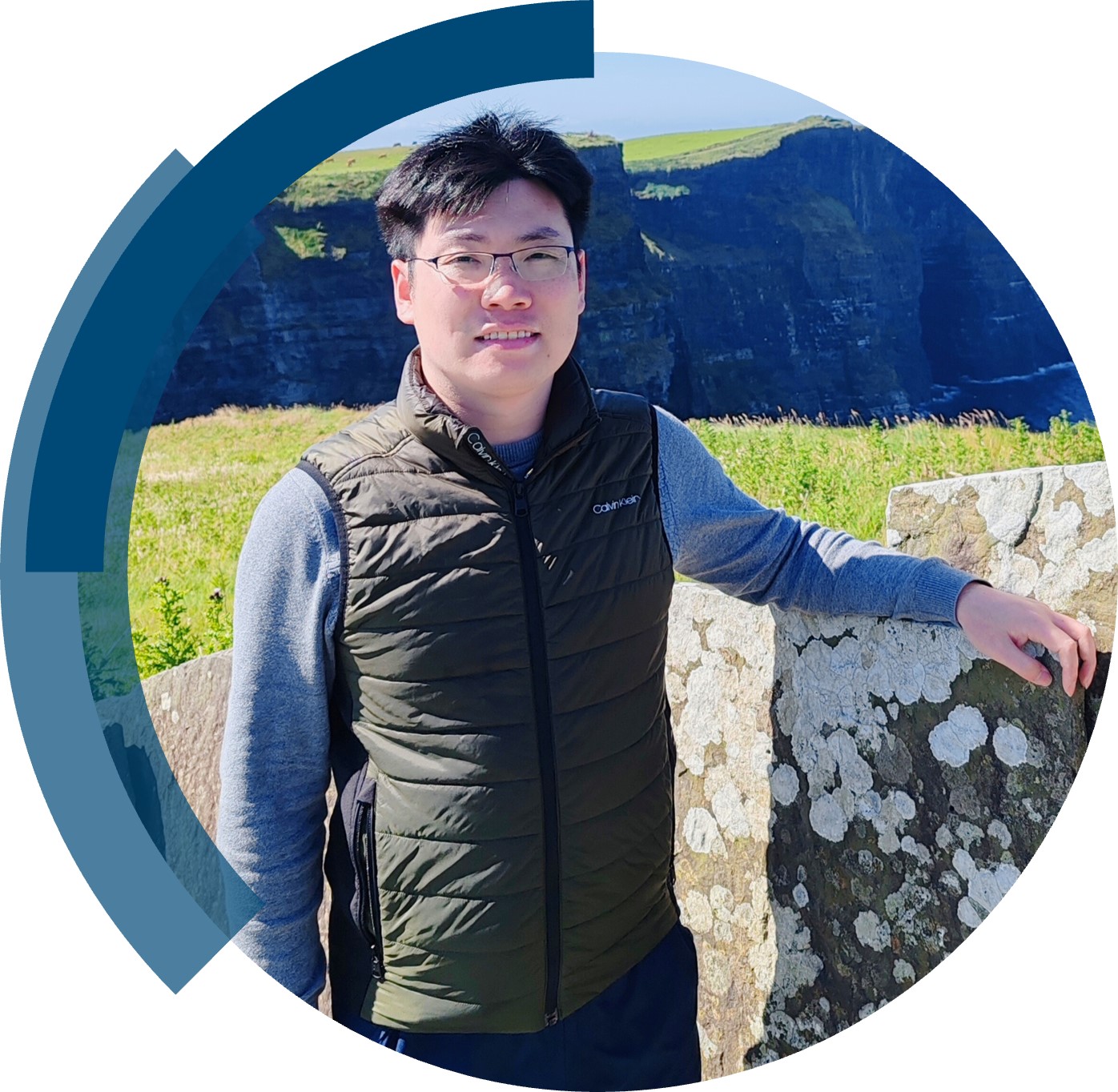 |
|
Dr. Shiqiang Wang (MRSC) is a Scientist at the Institute of Materials Research and Engineering (IMRE) of A*STAR Singapore, with over a decade of experience in crystal engineering, coordination chemistry, and metal-organic materials. Before joining IMRE, he worked as a Research Fellow at the National University of Singapore. He completed his PhD in 2020 and continued as a Postdoctoral Researcher at the University of Limerick, Ireland.
He has published over 40 scientific papers and 2 international patents (h index = 20). His research excellence has been recognised with several awards, including the European Crystallographic Association (ECA) “Young Scientist” Award (2018), the International Union of Crystallography (IUCr) “Young Scientist” Award (2019), the Chinese Government Award for Outstanding Self-financed Students Abroad (2020), the RSC “Early Career Researcher” Bursary (2024) and Researcher Development and Travel Grant (2024). In 2023, Dr. Wang was interviewed by the esteemed RSC Journal ChemComm. He was also invited to attend the 11th Global Young Scientist Summit (GYSS) in 2024, organized by the NRF Singapore. Recently, he was awarded the MTC Young Individual Research Grant (YIRG), which supports his independent research.
You can reach out to Shiqiang on Twitter: @ShiQiang_SQ, WeChat: sqwang0123, LinkedIn: https://www.linkedin.com/in/sqwangchem or his personal website: https://sqwangchem.com/. |
How have you seen ChemComm evolve over the years and what aspects do you find most noteworthy?
ChemComm has made significant progress over the years, particularly in advancing open access and research transparency. Its special issues, such as Milestones – First Independent Articles and thematic collections on emerging fields, spotlight new trends, early-career researchers, and underrepresented voices in science.
What is your favourite thing about ChemComm?
Its emphasis on concise (4-page), high-impact research that covers diverse areas of chemistry while remaining accessible to a broad audience.
In what ways do you think ChemComm stands out among other journals in your field?
ChemComm stands out for its concise format and rapid publication (100 issues annually).
How would you describe the peer review process and interaction with the editorial team at ChemComm?
The peer review process at ChemComm is rigorous yet efficient, ensuring high-quality publications while maintaining a swift timeline. The editorial team is highly professional and supportive, offering clear communication and guidance throughout the submission and review process.
Are there ways in which the journal can further support and engage with future generations of scientists?
ChemComm could further support future scientists by expanding initiatives like early-career editorial boards and mentorship programs. Providing more opportunities for young researchers to act as guest editors or reviewers would offer valuable experience.
Could you provide a brief summary of your recent ChemComm publication?
Water is ubiquitous on Earth as atmospheric water vapor, however, its uneven geographical distribution affects crucial societal needs, such as freshwater availability and air dehumidification. Porous materials hold great promise for water sorption applications. However, it is crucial to evaluate the performance of these materials across the full range of RH levels, including water uptake, sorption kinetics, recyclability, regeneration temperature, in addition to synthesis costs.
In this work (https://doi.org/10.1039/D4CC05990E), we present the water sorption properties of the zeolitic metal azolate framework [Zn(mtz)2]n (MAF-7), which exhibits distinctive stepped water sorption isotherms over a wide temperature range (15 – 45 °C). Its water sorption performance was assessed in terms of water uptake, sorption kinetics, recyclability, and regeneration temperature. Compared to a variety of commercial desiccants and MOF materials, MAF-7 demonstrates superior or comparable water sorption performance particularly in terms of water deliverability between 60 – 0 % RH. This makes it a promising candidate for water sorption-based applications, such as indoor humidity control.
In your opinion, what are the next steps or potential areas of research that could build upon the findings in this paper?
Based on the findings in this paper, the next steps for research could involve developing enhanced water sorption materials, exploring multi-component sorbents, and integrating these with energy-efficient systems.
Be sure to read Shiqiang’s full communication, “Water sorption performance of the zeolitic metal azolate framework MAF-7” to learn more!
Comments Off on ChemComm’s 60th Anniversary – Shiqiang Wang


